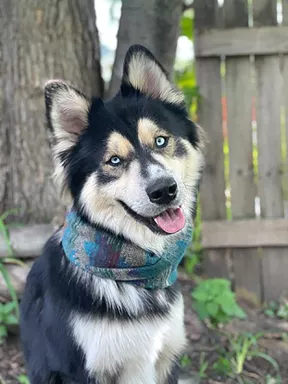German Shepherd Husky Mix: Gerberian Shepsky Dog Breed
The Shepsky is a mix between a German Shepherd and a Siberian Husky, known for its sturdy build and lively spirit. This mixed breed combines the German Shepherd’s work ethic and faithfulness with the Siberian Husky’s hardiness and energy.
The Shepsky sports a thick coat that can show various colors and has a sharp and intelligent look, often with the Husky’s distinctive light blue eyes. This breed thrives on physical activity and mental challenges, so regular play and training are necessary.
Owners should plan for routine health check-ups and a nutritious diet to address any inherited health concerns.
Key Takeaways
- Shepskies blend German Shepherd loyalty with Husky vitality.
- They boast a multicolored coat and often have striking blue eyes.
- Prioritize their exercise and health checks for wellbeing.
Shepskies are a German Shepherd and Husky blend, vigorous and robust. They display a dense, multicolored coat with possible blue eyes and need active play and brain games. A balanced diet and regular vet visits are vital for their health.
Quick Facts
The Shepsky is an energetic mix of a German Shepherd and Siberian Husky, known for its boundless energy and steadfast loyalty. Often called the Gerberian Shepsky, this hybrid combines the best traits of its parent breeds.
These dogs need a lot of room to move and regular exercise due to their solid builds and active nature, making them less ideal for small apartments. A Shepsky’s lifespan reflects their hardiness but also requires dedicated training and mental challenges to stay happy.
Their varied temperaments and features were passed down from their German Shepherd and Siberian Husky ancestors, meaning owners should know how to raise them to ensure these impressive dogs have a fulfilling life.
Shepsky Pictures
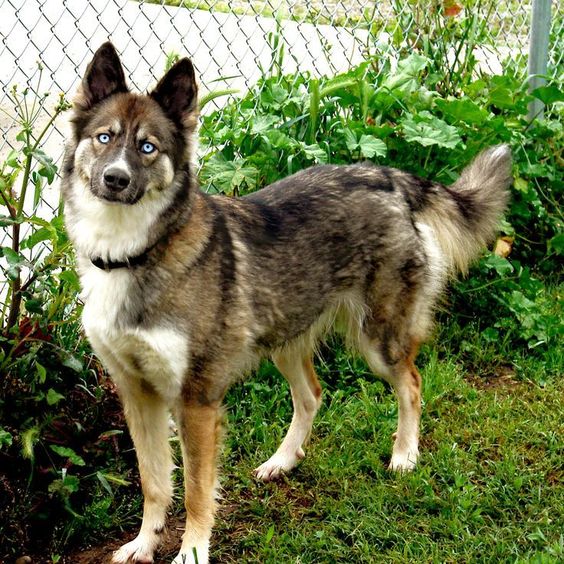
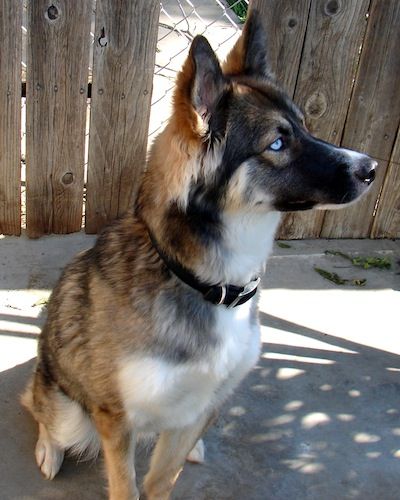
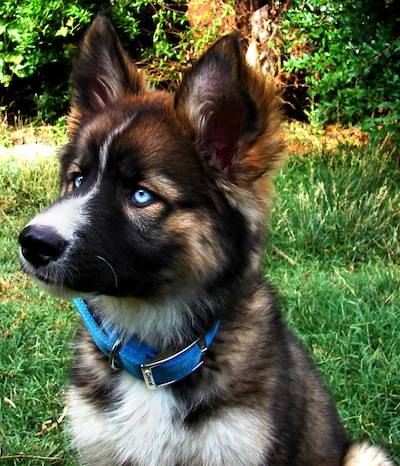
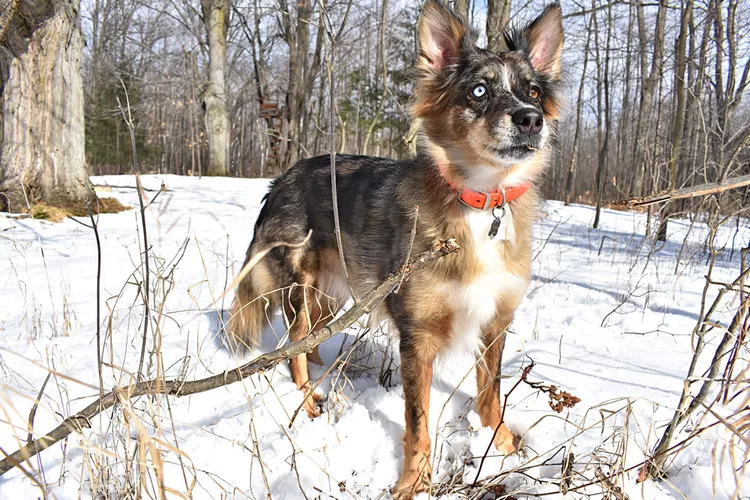
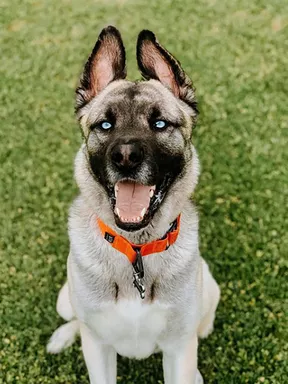
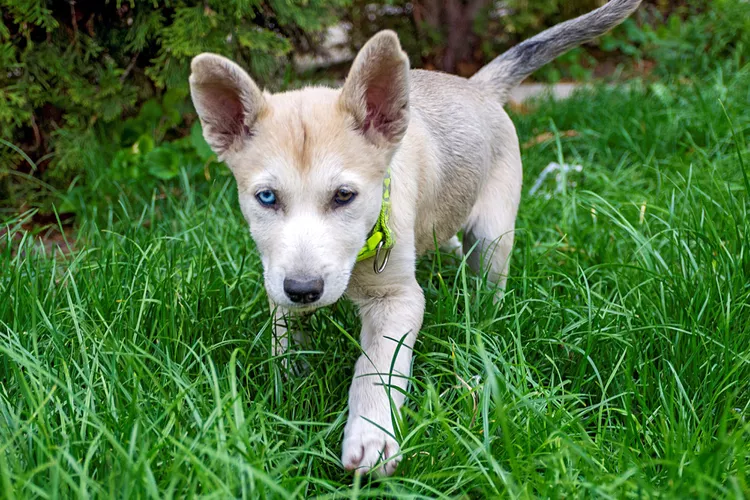
Overview
Shepskies are a dynamic mix, merging the German Shepherd’s dedication to work with the Siberian Husky’s endurance, making them resilient and adaptable pets for different lifestyles. Known as Gerberian Shepskies, this mixed breed mixed-breed their parent breeds’ finest qualities.
They are lively and affectionate, displaying the energetic traits of German Shepherds and Siberian Huskies. Shepskies are bright and enjoy company, showing remarkable adaptability to various living environments, including smaller spaces like apartments. However, they do need ample exercise to stay content.
Their thick fur, reflecting their robust ancestry, requires consistent grooming to keep shedding under control. This thoughtful combination of genetics yields a devoted and entertaining companion, especially suited for individuals or families with an active lifestyle.
Key Traits of Gerberian Shepsky
Gerberian Shepskies are known for their intelligence, agility, and strength, making them versatile dogs for home life and various jobs. These impressive dogs are a cross between German Shepherds and Siberian Huskies, inheriting notable qualities from both breeds. Their medium-length coats are dense and require routine brushing to keep them looking shiny and healthy. It’s essential to introduce them to different people and environments when they’re young and to train them regularly so they can grow up to be well-behaved adult dogs. A striking feature of many Gerberian Shepskies is their bright blue eyes, a characteristic typically passed down from their Husky ancestors.
| Trait | Description | Significance |
|---|---|---|
| Intelligence | They learn quickly due to their high mental capacity. | A characteristic feature of the Husky side. |
| Physical Build | They are strong and move gracefully, with a solid structure. | Allows them to perform various physical activities. |
| Coat | Their double coat is of medium length. | Provides insulation in various climates. |
| Socialization | Introducing them to new experiences early is vital. | Prevents behavioral issues. |
| Eye Color | Their eyes are often a striking blue. | A characteristic feature from the Husky side. |
Because of these attributes, Gerberian Shepskies stand out as both loyal family pets and capable working dogs. Regular care and positive training can help these dogs excel and become loving companions.
Breed Origins
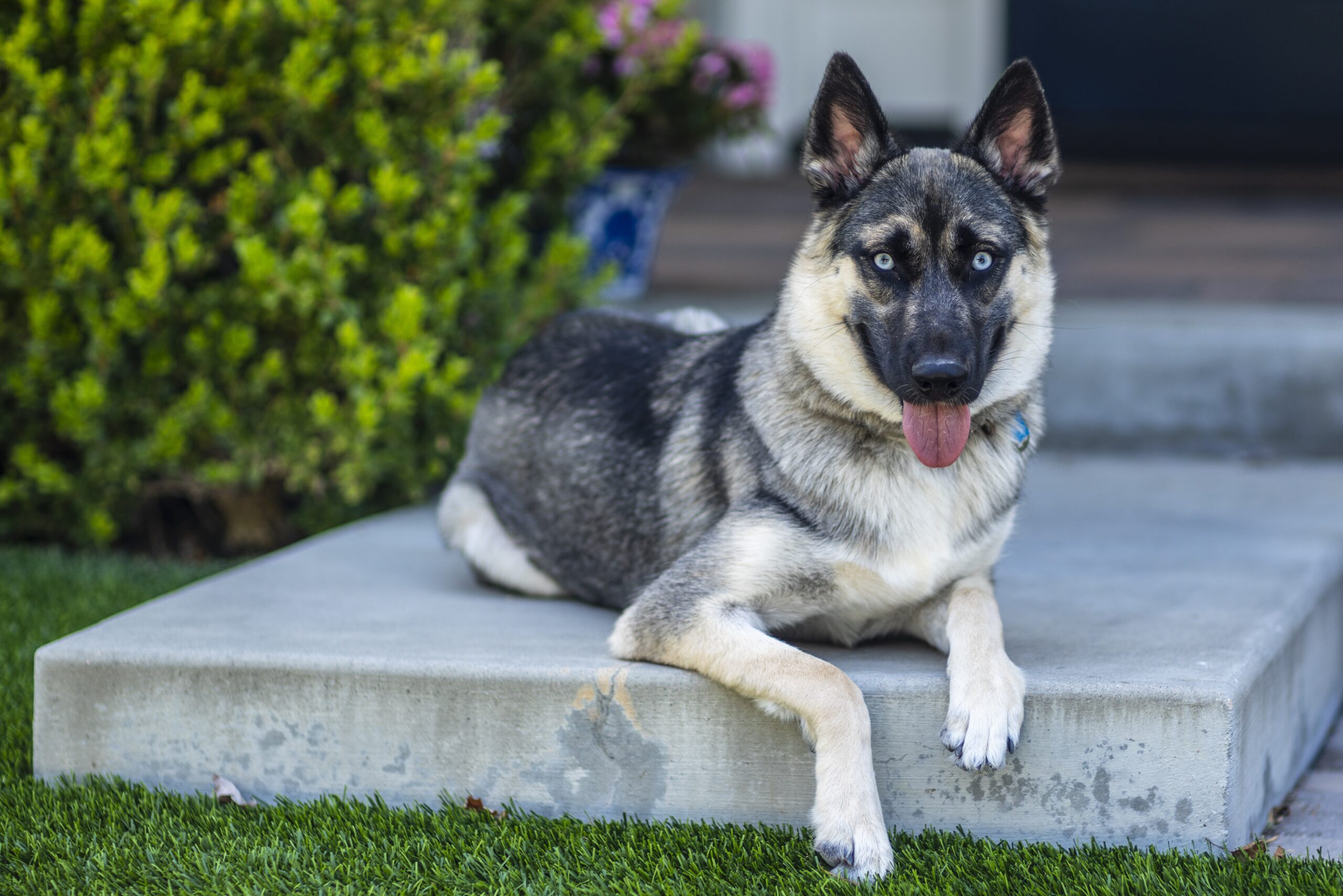
Understanding the Shepsky breed begins with looking at its ancestry and creation. The Shepsky is the product of two highly respected species:
The German Shepherd has a long history as a multi-purpose herding and guard dog. Known for their loyalty and versatility, these dogs have served in various roles, from assistance to law enforcement work.
On the other hand, the Siberian Husky boasts a storied role as a resilient sled dog, capable of withstanding icy environments.
In the latter part of the 20th century, breeders combined these two breeds with a goal in mind – to create a dog with a blend of the German Shepherd’s work ethic and the Husky’s endurance.
The result is the Shepsky, a breed now admired for its ability to perform tasks and its friendly demeanor. This mix of genetic qualities and the distinct backgrounds of each species have forged the multifaceted Shepsky we know today.
Ancestral Breed History
The Shepsky is a modern hybrid, but its ancestral roots run deep, with the German Shepherd emerging in Germany in the late 1800s and the Siberian Husky appearing in Northeast Asia in the early 1900s.
German Shepherds were developed for their herding skills and protective instincts, displaying intelligence and obedience. Meanwhile, Siberian Huskies were valued by the Chukchi for their ability to endure long distances pulling sleds across icy landscapes.
The intentional crossbreeding of these two breeds melds the German Shepherd’s diligence with the Husky’s hardiness, providing the Shepsky with a rich genetic heritage ideal for diverse tasks and companionship in challenging settings.
Genetic Mix Explanation
The Shepsky is a remarkable blend of two powerful breeds: the German Shepherd and the Siberian Husky. Conceived in the 1990s, this hybrid was intentionally bred to excel in various tasks, combining the German Shepherd’s sharp intellect with the Husky’s enduring stamina.
A Shepsky puppy results from carefully selected breeding, inheriting a wealth of characteristics from its parents. These traits include the German Shepherd’s disciplined intelligence and the Husky’s impressive endurance.
Understanding the genetic combination of the Shepsky highlights its ability to adapt and perform across different situations, a direct outcome of its diverse lineage. This breed embodies its forebears’ physical and behavioral qualities, showcasing the success of thoughtful breeding efforts.
Origin Geographic Location
The Shepsky is a solid hybrid dog, carrying the legacy of its parent breeds, the German Shepherd from Germany and the Siberian Husky from Northeast Asia.
These regions are notorious for their brutal weather, contributing to the breeds’ resilience and adaptability.
The German Shepherd is known for its skill in work and protection, while the Siberian Husky is admired for its stamina and ability to pull sleds.
This crossbreed takes the best of both worlds, creating a versatile and robust dog and showcasing the successful outcome of selective breeding focused on creating an exceptional working companion.
Physical Dimensions of Gerberian Shepskies
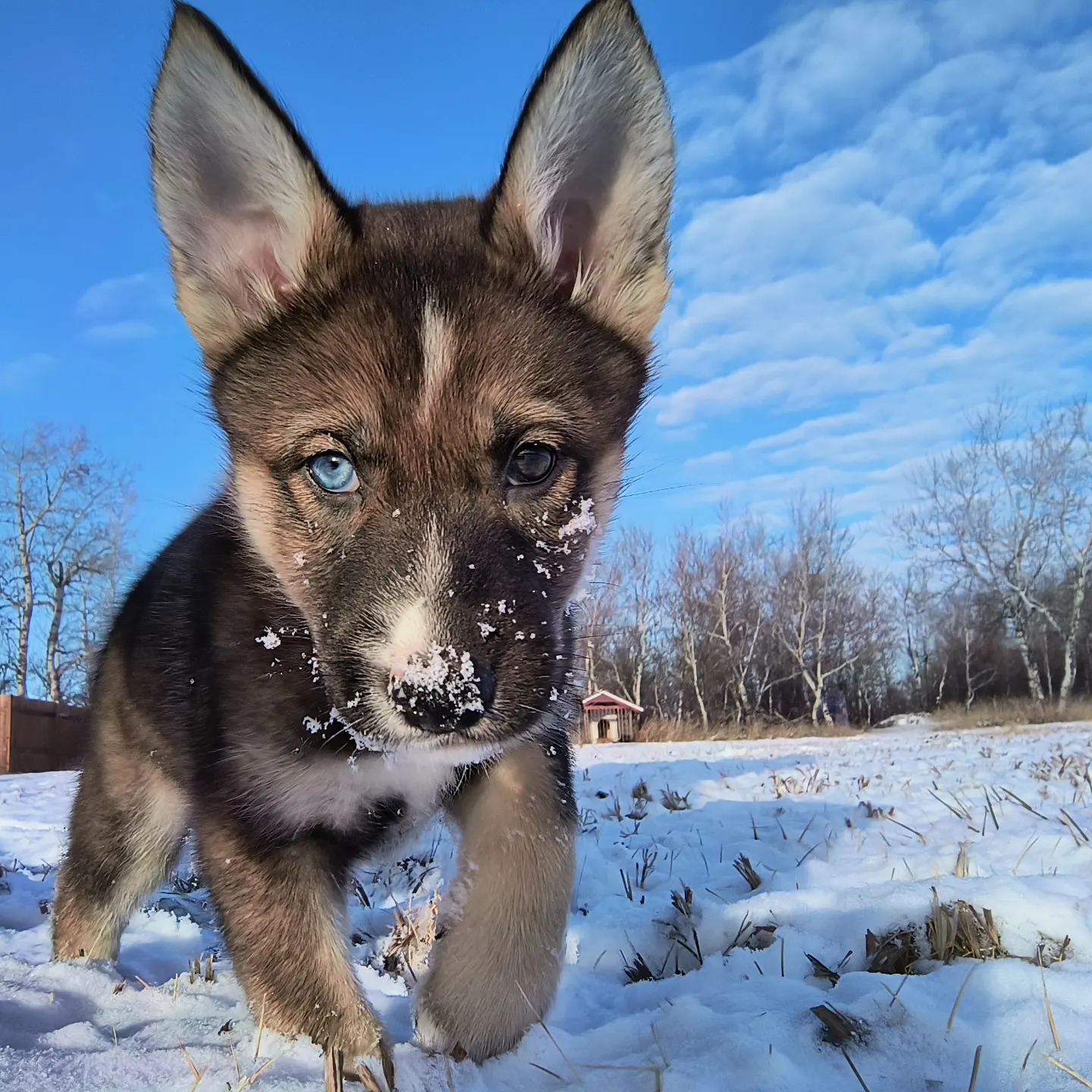
The Shepsky is well-known for its energetic personality and reflects the strength and speed inherited from its ancestors. If you’re considering bringing a Shepsky into your home, here are some essential physical characteristics to keep in mind:
Size: Shepskies have a noticeable appearance and typically fall into the medium-sized dog category.
Weight: A healthy Shepsky can weigh anywhere from 45 to 88 pounds, indicating a solid and well-built physique.
Height: These dogs stand tall at 20 to 25 inches from paw to shoulder, giving them a noble and attentive look.
Comparing Breed Sizes: The Shepsky combines the best attributes of its parent breeds, showcasing a balance of muscular build and stamina. This information is beneficial when considering how much space a Shepsky might need indoors and in a yard.
Average Shepsky Size
Shepskies, a cross between German Shepherds and Siberian Huskies, typically weigh 45 to 88 pounds and stand 20 to 25 inches tall at the shoulder. These large dogs combine the strength and agility of their parent breeds.
A healthy Shepsky can live long if they get the proper care, including regular exercise to keep their muscular body in shape.
Their size and active nature are inherited from the German Shepherd and the Siberian Husky, giving them a lively personality.
Weight Range
Shepskies, a crossbreed of the German Shepherd and Siberian Husky, can weigh anywhere from 45 to 88 pounds. These dogs stand out with the impressive size they get from their firm and hardy parents. Since Shepskies are a mix, there isn’t a fixed standard for their size; however, they often display the sturdiness and agility seen in their parent breeds.
To keep a Shepsky healthy, owners should pay close attention to their pet’s diet and exercise. The right mix of good nutrition and activity is critical to keeping these energetic dogs at a healthy weight, which can help them live a long and happy life. Regular check-ups with a vet are also an excellent way to keep track of their health.
Height Measurements
Shepskies, a mix of German Shepherds and Siberian Huskies, typically stand about 20 to 25 inches at the shoulder. They inherit a medium to large size from their parents, making them solid and adaptable.
Their stature is a blend of the German Shepherd’s strength and the Husky’s agility, ideal for various activities, from being loyal pets to working roles.
When you think of bringing a Gerberian Shepsky into your home, ensuring your space can handle its energetic nature and size is wise.
Breed Size Comparison
The Gerberian Shepsky, a cross between the German Shepherd and the Siberian Husky, often shows a balanced size. These dogs tend to have the muscular build of a German Shepherd mixed with the Husky’s sleek athleticism. A Gerberian Shepsky’s size generally falls into the medium to extensive range, showcasing the best physical qualities from both parent breeds.
Not only does the Shepsky’s build catch the eye, but it also hints at their energetic nature and need for regular exercise. Anyone considering a Shepsky should understand that their size goes hand in hand with their lively spirit and requirement for plenty of physical activities, a trait they get from the German Shepherd and Siberian Husky parents.
Growth Patterns
Knowing how a Shepsky grows is vital to giving them what they need as they develop from energetic pups to solid adult dogs. The Gerberian Shepsky, with its mix of German Shepherd and Siberian Husky genetics, grows at various rates but tends to become a medium to large dog.
These active canines benefit from routine and consistent training to help with their behavior and ensure they get enough exercise for their physical growth. Watching their growth closely lets you tailor their diet and exercise to their evolving energy needs and size.
Good diet and physical activity management help them grow into proportional, healthy, and active adults, ready to enjoy a lifestyle that fits their lively character.
Temperament Traits
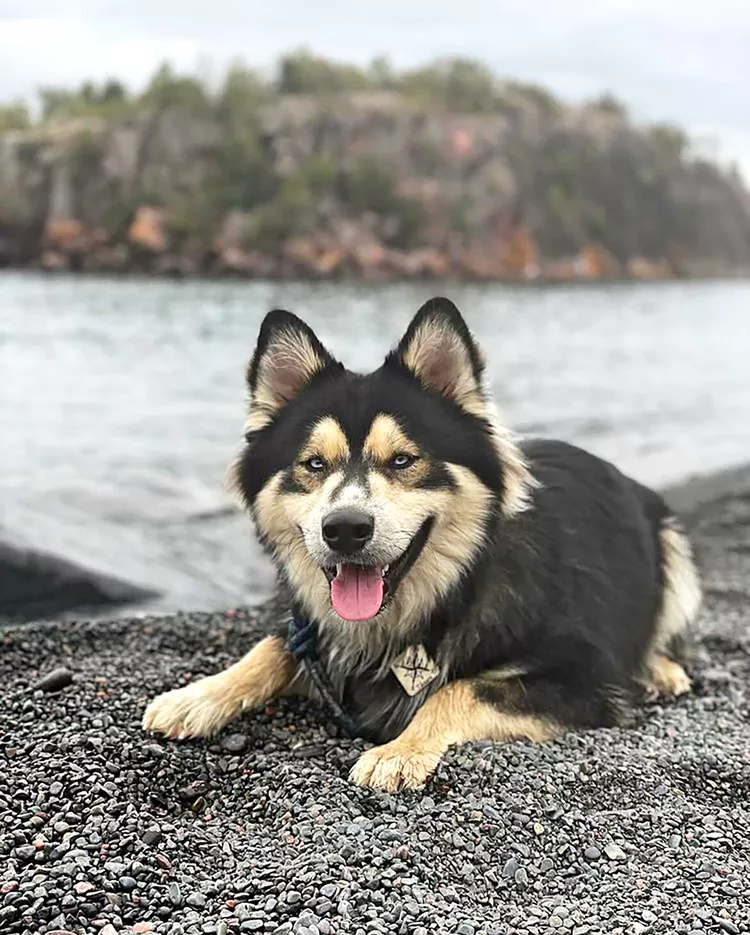
The Shepsky is known for its dedication and protective instincts, making it an excellent family guardian.
These dogs are energetic and need plenty of exercise to stay happy and healthy.
They’re also quite intelligent, which makes training them a rewarding experience.
To ensure they grow into friendly and well-behaved adults, it’s essential to introduce them to various people and situations early on.
When you understand and nurture these qualities, a Shepsky can become a wonderfully balanced and affectionate pet.
Committed and knowledgeable owners can help their Shepsky’s natural traits flourish, resulting in a loyal and loving companion.
Loyal Protective Nature
Shepskies are well known for their strong sense of loyalty and instinct to protect. These traits stem from their heritage, with the German Shepherd’s protective instincts complementing the Siberian Husky’s unwavering commitment. This mix creates a vigilant guardian and a reliable friend.
Their sharp intelligence and alertness are invaluable in jobs like search and rescue or law enforcement.
In a home setting, Shepskies are affectionate and dedicated, watching over family members, especially kids, with a fierce, protective attitude. Training them requires a consistent and firm approach to channel their independence positively. This helps maintain their loyalty as an asset to the family and the wider community.
High Energy Levels
Shepskies are known for their boundless energy because they come from hardworking breeds. They need a lot of physical activity and brain games to stay happy and well-behaved. These dogs thrive with owners who lead an active lifestyle and include them in activities like dog sports, where they can show off their physical prowess and intelligence.
A Shepsky is not just a pet but a vibrant family member who thrives on interaction and new challenges.
If a Shepsky doesn’t get enough exercise, they might start acting out. Owning one of these energetic dogs means committing to keeping them busy and content. They fit best with people who love being on the move and want a dog that can keep up with them.
Intelligence and Trainability
Gerberian Shepskies, a mix of their parent breeds, are brilliant dogs that learn new commands and routines quickly and willingly. They usually respond to instructions within a few tries, reflecting their smarts and eagerness to please.
Consistent and well-planned obedience training that uses positive reinforcement taps into their learning ability and strengthens the relationship between the dog and its trainer. These dogs have a streak of independence and may require patience and persistence from trainers to channel their sharp minds productively.
The mental agility of the Gerberian Shepsky shows just how valuable they can be in situations that require clever problem-solving.
Socialization Requirements
Socializing a Gerberian Shepsky is critical to their well-being and helps shape a friendly and balanced personality. These energetic and intelligent dogs thrive on interaction and need a structured environment to channel their instincts positively.
Dog owners should actively expose their Shepsky to different settings, people, and animals, promoting good behavior and confidence. With their strong desire to please, they quickly pick up on social cues if guided correctly.
Lack of socialization can lead to negative behaviors due to their high energy, highlighting the importance of a thoughtful and steady training regimen. A Shepsky that receives the proper social exposure will become a devoted and well-behaved friend, a testament to the time and love their owners put into their training.
Behavioral Consistency
Gerberian Shepskies bring together the best qualities of their parent breeds – the German Shepherd’s sharp intelligence and the Siberian Husky’s friendly nature. They often show a mix of protective yet affectionate traits, and this combination requires consistent training to ensure they behave well.
These dogs do best with regular instruction and feedback, which helps manage any strong-willed behaviors they might have. With the proper guidance, a Shepsky can become an incredibly stable and devoted pet, showcasing the admirable characteristics of the German Shepherd and Siberian Husky.
Shepsky Health Concerns
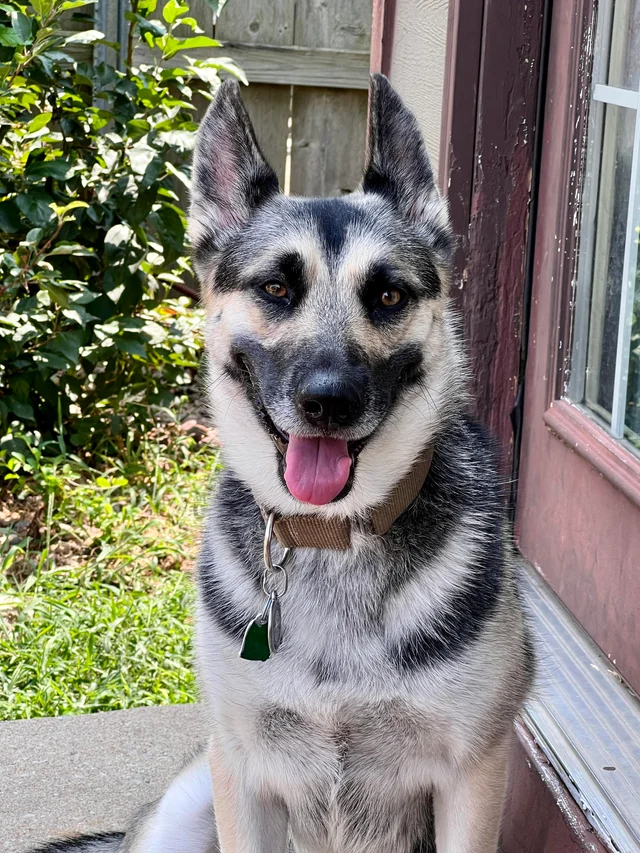
Shepskies, a mix of German Shepherds and Siberian Huskies, are generally strong dogs, but they, too, have a few health issues to watch out for.
Their genetic heritage means they can be prone to hip dysplasia, so it’s wise to monitor their joint health and consider preventive measures.
Regular check-ups with a vet are also essential to catch early signs of eye problems like progressive retinal atrophy, which is common in these breeds.
Another concern is myelopathy, a severe condition affecting the spine that can develop in Shepskies. Ongoing care from a vet can help manage this issue should it arise.
Taking these health concerns seriously and being proactive with veterinary care is vital to maintaining the well-being of these energetic dogs.
Hip Dysplasia Risk
Shepskies, a mix of German Shepherds and Siberian Huskies, are often at high risk of hip dysplasia. This condition can significantly impact their ability to move freely and enjoy life.
Due to their heritage, these dogs are prone to joint issues, including hip and elbow dysplasia, making it vital for owners to be proactive in monitoring their health.
Regular vet visits are vital in detecting any early signs of joint issues and can be crucial in creating a plan to maintain the dog’s health and activity level for as long as possible.
Eye Condition Prevalence
Shepskies, a mix of German Shepherds and Siberian Huskies, often inherit eye conditions like progressive retinal atrophy. This disorder can cause blindness, and it might not show symptoms until it’s too late.
German Shepherds and Siberian Huskies, the breeds that create a Shepsky, have a history of eye problems. One example is chronic superficial keratitis, also known as pannus, which is common in German Shepherds.
Owners need to be watchful for any signs of eye issues. Regular check-ups with a vet specializing in eye care can catch and manage these conditions early, helping keep these energetic dogs healthy and happy.
Myelopathy in Shepskies
Shepskies, a mix between German Shepherds and Siberian Huskies, risk inheriting degenerative myelopathy. This condition, more prevalent in German Shepherds, typically starts with weakness in the back legs and can progress to complete paralysis, highlighting health concerns for these energetic dogs.
Owners of Shepskies should be alert to the subtle signs of myelopathy, which can worsen over time, leading to a loss of mobility. Genetics are a significant factor in this disease, and while there’s no cure yet, recognizing symptoms early and providing supportive care can make a big difference in a dog’s comfort and mobility. Regular vet visits are critical for catching and managing this condition early on.
Grooming and Maintenance
A Shepsky’s thick coat requires regular care to keep it healthy and beautiful. Managing shedding is vital to keeping your home clean and the dog’s coat in top condition. Regular brushing is essential to prevent tangles and keep the fur shiny.
A well-planned bathing schedule protects the skin’s oils, and trimming the nails is essential for the dog’s mobility. Cleaning the ears well can help prevent infections, showing why a thorough grooming routine is vital for Shepsky’s well-being.
Shedding Management Strategies
Grooming Shepskies involves regular brushing to control their significant shedding and keep their fur healthy. Their double coat, comprising a dense underlayer and a protective top layer, needs careful attention to prevent matting, which can trap dirt and lead to skin problems.
Brushing your Shepsky at least twice a week keeps their coat shiny and is vital for their health. It helps spot skin issues or pests early on.
Grooming goes beyond making your dog look good; it’s vital to keeping them healthy.
Brushing Frequency Recommendations
Brushing your Shepsky at least twice a week is crucial to keep their coat healthy and manage shedding. The Gerberian Shepsky, known for its thick fur, sheds more when the seasons change, especially as it gets colder. Regular grooming is necessary to prevent skin problems and avoid overheating.
Taking care of their coat is more than making them look good – it’s about their comfort and strengthening the bond with your pet. A well-planned grooming routine is vital for your Shepsky’s overall health.
Bathing Routine Tips
Shepskies, the energetic mix of German Shepherds and Siberian Huskies, have a dense double coat that requires only occasional baths to maintain their skin’s health and the coat’s natural oils. Bathing these dogs too often can lead to dry skin and irritation.
When your Shepsky needs a bath, choosing the right shampoo is essential; opt for one designed for dogs that hydrates and supports healthy skin. After applying shampoo, it’s necessary to rinse your dog thoroughly to avoid any residue that could cause itchiness or discomfort.
Regular brushing and the occasional bath keep your Shepsky’s coat lustrous and showcase their dynamic energy and strength.
Nail Trimming Importance
Maintaining short and healthy nails is vital for Gerberian Shepsky’s overall well-being. These dogs, a mix of German Shepherd and Siberian Husky, are known for their active lifestyle. If their nails get too long, it can lead to discomfort or even pain when they walk. This might also cause them to change how they walk, which can result in joint problems over time.
To keep your Shepsky happy and moving quickly, keeping up with regular nail trims is essential. You might want to schedule visits with a vet or a skilled groomer. These professionals can help ensure that your dog’s nails are trimmed correctly, preventing any issues with their paws or movement.
Ear Cleaning Techniques
Moving from nail trimming to ear care, Gerberian Shepskies need regular ear cleanings to prevent infections and keep their hearing sharp. These dogs, a crossbreed of German Shepherd and Siberian Husky, have thick fur that can trap dirt and moisture, so cleaning their ears gently but effectively is vital.
Consistent ear hygiene is necessary to avoid discomfort or other health problems in an active breed. Dedicated owners know that keeping their ears clean is as important as regular exercise for Shepsky’s health. Always seek a vet’s guidance to ensure your ear cleaning routine supports your dog’s health.
Dietary Requirements
Feeding a Shepsky properly takes careful attention to ensure they stay healthy and energetic. Their diet should have the right balance of nutrients to support their activity level and muscle health. Awareness of food allergies is critical to avoid adverse reactions and ensure a happy digestive system. Regular meal times help keep their metabolism and energy steady.
Each Shepsky might need a slightly different diet, so creating a meal plan for them is wise. A personalized diet is vital to raising a lively and healthy dog.
Optimal Nutrient Balance
For Shepsky to stay in top shape, their diet must be carefully crafted to include the right mix of proteins, fats, and carbohydrates.
These energetic dogs need a diet that supports their active lifestyle. Choose dog food that meets their high energy needs to keep them healthy and lively.
Get proteins from good quality meats, fats from beneficial oils, and carbohydrates from whole grains and veggies.
Keep an eye on their meal sizes to avoid unwanted weight gain, and keep tabs on your dog’s overall well-being.
If you’re unsure about the best diet for your Shepsky, your veterinarian can offer a tailored nutrition plan that fits your dog’s requirements.
Food Allergies Management
Shepskies, the crossbreed of German Shepherds and Siberian Huskies, often struggle with food allergies. These dogs may need special diets to avoid irritating their sensitivities. Figuring out what foods cause problems usually means removing ingredients one at a time to see what causes a reaction.
After finding the culprits, a customized diet can keep these active dogs both lively and well.
Dog owners should work with a vet to create a nutrient-rich meal plan that clears known allergens. This careful approach is vital to preserve the health of these energetic animals.
Feeding Schedule Importance
Creating a regular feeding schedule is vital for Shepskies to meet their nutritional needs and manage potential food allergies. These active dogs thrive on routine, which helps maintain their energy levels and prevents them from overeating when they’re on their own.
Shepskies typically need their food divided into a minimum of two meals per day to keep up with their busy lifestyle. A precise feeding timetable is also crucial to keeping their weight in check and maintaining their overall well-being.
As Shepskies grow and age, their food requirements change, so getting advice from a vet to adjust their diet as needed is essential.

